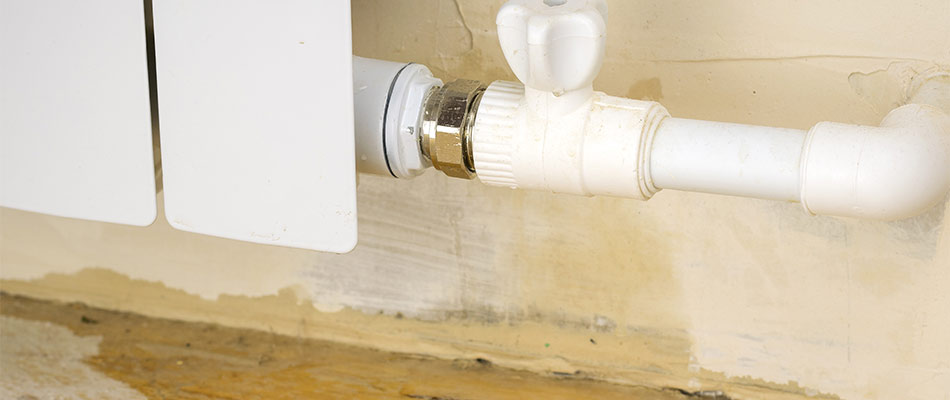Everybody maintains their own unique perception with regards to Locating water leaks.

Early discovery of dripping water lines can reduce a possible catastrophe. Some tiny water leaks may not be noticeable.
1. Analyze the Water Meter
Every house has a water meter. Checking it is a surefire manner in which aids you find leakages. For starters, switch off all the water sources. Make certain no one will certainly flush, use the tap, shower, run the washing maker or dishwashing machine. From there, most likely to the meter and also watch if it will change. Considering that nobody is utilizing it, there should be no movements. If it moves, that suggests a fast-moving leakage. If you spot no modifications, wait an hour or two as well as inspect back once again. This implies you might have a sluggish leak that can even be below ground.
2. Check Water Usage
Assess your water expenses and also track your water consumption. As the one paying it, you must notice if there are any type of disparities. If you detect sudden changes, in spite of your intake being the same, it means that you have leaks in your plumbing system. Remember, your water expense need to fall under the same range every month. A sudden spike in your bill suggests a fast-moving leak.
Meanwhile, a constant rise each month, despite the same behaviors, reveals you have a slow leakage that's likewise slowly rising. Call a plumber to thoroughly inspect your building, particularly if you really feel a warm area on your flooring with piping beneath.
3. Do a Food Coloring Examination
When it involves water intake, 30% comes from bathrooms. Examination to see if they are running effectively. Drop flecks of food color in the storage tank and wait 10 minutes. If the color somehow infiltrates your dish during that time without flushing, there's a leak between the container and dish.
4. Asses Outside Lines
Do not neglect to inspect your outdoor water lines also. Test faucets by connecting a garden tube. Must water seep out of the link, you have a loosened rubber gasket. Change this and make certain all links are tight. It will assist get it professionally examined and also kept annually if you've obtained a lawn sprinkler system. One little leak can waste tons of water as well as surge your water expense.
5. Assess the circumstance and evaluate
Homeowners must make it a practice to examine under the sink counters as well as even inside closets for any bad odor or mold development. These two warnings show a leak so punctual attention is needed. Doing routine evaluations, even bi-annually, can save you from a significant issue.
A lot more importantly, if you understand your house is currently old, maintain a watchful eye on your heating systems, tubes, pipes etc. Look for discolorations and also compromising as the majority of devices and also pipelines have a life expectancy. They will certainly additionally naturally deteriorate because of tear as well as wear. If you think leaking water lines in your plumbing system, do not await it to intensify. Call a professional plumber right now so you don't wind up with a horrible mess in your home.
Early discovery of dripping water lines can reduce a prospective calamity. Some little water leakages may not be visible. Checking it is a guaranteed method that assists you discover leaks. One little leak can throw away lots of water as well as surge your water expense.
If you think dripping water lines in your plumbing system, don't wait for it to escalate.
WARNING SIGNS OF WATER LEAKAGE BEHIND THE WALL
PERSISTENT MUSTY ODORS
As water slowly drips from a leaky pipe inside the wall, flooring and sheetrock stay damp and develop an odor similar to wet cardboard. It generates a musty smell that can help you find hidden leaks.
MOLD IN UNUSUAL AREAS
Mold usually grows in wet areas like kitchens, baths and laundry rooms. If you spot the stuff on walls or baseboards in other rooms of the house, it’s a good indicator of undetected water leaks.
STAINS THAT GROW
When mold thrives around a leaky pipe, it sometimes takes hold on the inside surface of the affected wall. A growing stain on otherwise clean sheetrock is often your sign of a hidden plumbing problem.
PEELING OR BUBBLING WALLPAPER / PAINT
This clue is easy to miss in rooms that don’t get much use. When you see wallpaper separating along seams or paint bubbling or flaking off the wall, blame sheetrock that stays wet because of an undetected leak.
BUCKLED CEILINGS AND STAINED FLOORS
If ceilings or floors in bathrooms, kitchens or laundry areas develop structural problems, don’t rule out constant damp inside the walls. Wet sheetrock can affect adjacent framing, flooring and ceilings.
https://www.servicemasterbyzaba.com/blog/how-to-detect-water-leakage-in-walls/

We are very intrigued by Hacks to detect leaks and I really hope you enjoyed the entire post. Loved our blog posting? Please share it. Let somebody else check it out. Thanks a lot for taking the time to read it.